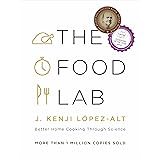Elevating your diet with delicious and healthful choices is a worthwhile goal. Simple, delicious **alkaline recipes** can easily become staples in your kitchen. As seen in the video above, incorporating alkaline-forming foods supports the body’s natural balance. This approach aims to help the body function optimally.
The human body maintains a delicate pH balance. Blood pH is typically kept between 7.3 and 7.5. A urinary pH around 7 is also considered ideal. When the body operates within these levels, proper functioning is often observed. Many health issues are thought to arise from an overly acidic internal environment.
Understanding the Alkaline-Acid Balance for Optimal Health
The goal of an alkaline diet is to consume more alkaline-forming foods. This helps counteract the effects of acid-forming foods. Stress, toxins, and immune system reactions can also contribute to acidity. Dietary choices are a significant factor in managing this balance. Eating plant-based alkaline foods can promote better health.
Think of your body as a swimming pool. The water needs a specific pH to stay clean and healthy. Adding too many acidic chemicals (like chlorine) can throw off this balance. Similarly, a diet heavy in acid-forming foods can challenge your body’s pH regulatory systems. Alkaline foods act like natural purifiers, helping maintain clarity and balance.
What Makes Foods Alkaline-Forming?
It is important to differentiate between a food’s pH and its effect on the body. For instance, citrus fruits like limes and lemons taste acidic. However, they become alkaline-forming during digestion. This metabolic process makes them valuable additions to an alkaline diet. Their unique mineral content contributes to this effect.
Many plant-based foods are considered alkaline-forming. These include most fruits and vegetables. Grains, proteins, and dairy products often contribute to acidity. A balanced plate will feature an abundance of greens, fruits, and healthy fats. This dietary pattern supports a more alkaline state.
Exploring Dr. Sebi’s “Electric Foods” and Alkaline Eating
Dr. Sebi, a renowned herbalist, advocated for an “electric foods” diet. This plan focuses on specific plant-based foods that are highly nutritious and alkaline. His philosophy emphasizes foods that are natural and unhybridized. Adherents believe these foods provide vital energy and support healing. Many foods highlighted in alkaline eating align with his recommendations.
While some lists may vary, the core principles remain consistent. Prioritizing whole, unprocessed plant foods is key. This approach is not solely about pH but overall nutritional density. Such foods are packed with vitamins, minerals, and antioxidants. They support various bodily functions and promote vitality.
Key Alkaline Ingredients in Simple Delicious Recipes
The video showcased several powerful alkaline ingredients. These are easy to find and integrate into daily meals. Each offers unique nutritional benefits. They contribute to a vibrant and balanced diet.
-
Kale: This leafy green is a nutritional powerhouse. It is rich in vitamins K, A, and C. Kale also provides important minerals like calcium and potassium. Its high fiber content supports digestive health.
-
Quinoa: A versatile and complete protein source. Quinoa contains all nine essential amino acids. It is also an excellent source of fiber and various minerals. This grain is a favorite for those following a vegan diet.
-
Apples: Known for their sweet crunch, apples are also alkaline. They offer dietary fiber and antioxidants. Apples can add a natural sweetness to both meals and juices. Many varieties are available for diverse flavors.
-
Limes: Though tart, limes are alkaline-forming post-digestion. They are packed with Vitamin C. Limes add a bright, fresh flavor to dishes and beverages. They are vital for boosting immunity.
-
Squash: Butternut squash is incredibly nutritious. It provides up to 50% of your recommended daily Vitamin C. It is also an excellent source of Vitamin A. Squash offers a sweet, earthy flavor and creamy texture.
-
Parsley: This herb is alkaline and full of vitamins. Parsley offers vitamins K, C, and A. It adds a fresh, herbaceous note to many dishes. It can also support kidney function.
-
Avocados: These creamy fruits are alkaline and provide healthy fats. They are rich in monounsaturated fats. Avocados also contain fiber, potassium, and various vitamins. They add satiety and a luxurious texture to meals.
-
Ginger: A staple in many health regimens, ginger is known for its anti-inflammatory properties. It also aids digestion. Ginger adds a pungent, warming kick to juices and meals. It is a potent detoxifier.
-
Celery: With its high water content, celery is hydrating. It is rich in electrolytes and antioxidants. Celery contributes a mild, earthy flavor to juices. It supports overall cellular health.
Crafting an Alkaline-Friendly Main Meal: Roasted Butternut Squash & Quinoa Salad
Preparing a meal that is both healthy and delicious is simpler than it seems. The video demonstrated a vibrant salad idea. This dish combines hearty grains with roasted vegetables and fresh greens. It is packed with flavor and nutrients.
Roasted butternut squash forms a sweet and savory base. Cubed squash is tossed with olive oil, salt, and parsley. Roasting brings out its natural sweetness and creates a tender texture. This process locks in valuable vitamins A and C.
Quinoa provides a protein-rich foundation. It is cooked simply with water and a pinch of salt. Rinsing quinoa before cooking removes bitterness. This grain offers a fluffy texture and satisfying feel. It provides essential amino acids for energy.
Massaged kale adds a tender, leafy green component. Kale is washed and then gently massaged with a dressing. The dressing combines extra virgin olive oil, grated garlic, and lime juice. Black pepper also adds a touch of spice. Massaging softens the kale, making it more palatable.
Fresh additions complete this alkaline meal. Sliced apples introduce a sweet crunch and pectin fiber. Diced avocado provides creamy texture and healthy fats. Fresh parsley adds a burst of herbaceous flavor. A final squeeze of lime juice enhances all the flavors.
Energizing with an Alkaline Green Juice
Juices offer a fantastic way to consume a high concentration of nutrients. An alkaline green juice can be a refreshing boost. It allows for quick absorption of vitamins and minerals. This recipe is designed for maximum health benefits.
The green juice featured utilizes a blend of powerful ingredients. Apples provide natural sweetness to balance the greens. Kale and celery form the robust green base. Ginger adds a spicy kick and digestive aid. Limes contribute a tangy brightness and Vitamin C.
Juicing extracts the liquid nutrients from produce. This process removes the fiber, making nutrients highly bioavailable. A quality juicer ensures maximum extraction. The resulting liquid is a potent tonic for the body.
For those new to green juices, adjusting the sweetness is easy. Adding more apple or other alkaline sweet fruits helps. This can soften the intense green flavor. Over time, palates often adapt to the robust taste. Many people come to crave these potent elixirs.
The Broader Benefits of Embracing Alkaline Eating
Adopting an alkaline-rich diet extends beyond just these **alkaline recipes**. It often involves a shift towards whole, plant-based foods. This approach can lead to increased energy levels. Many individuals report improved digestion and clearer skin. The body’s natural detoxification processes are supported.
An alkaline diet encourages hydration. This is crucial for all bodily functions. Many alkaline foods, like celery, have high water content. Regular consumption of fresh produce provides essential fluids. This also aids in nutrient transport and waste removal.
This dietary philosophy prioritizes nutrient density. Whole foods are naturally rich in vitamins, minerals, and antioxidants. These compounds protect cells from damage. They support immune function and reduce inflammation. Embracing this way of eating fosters long-term wellness.











